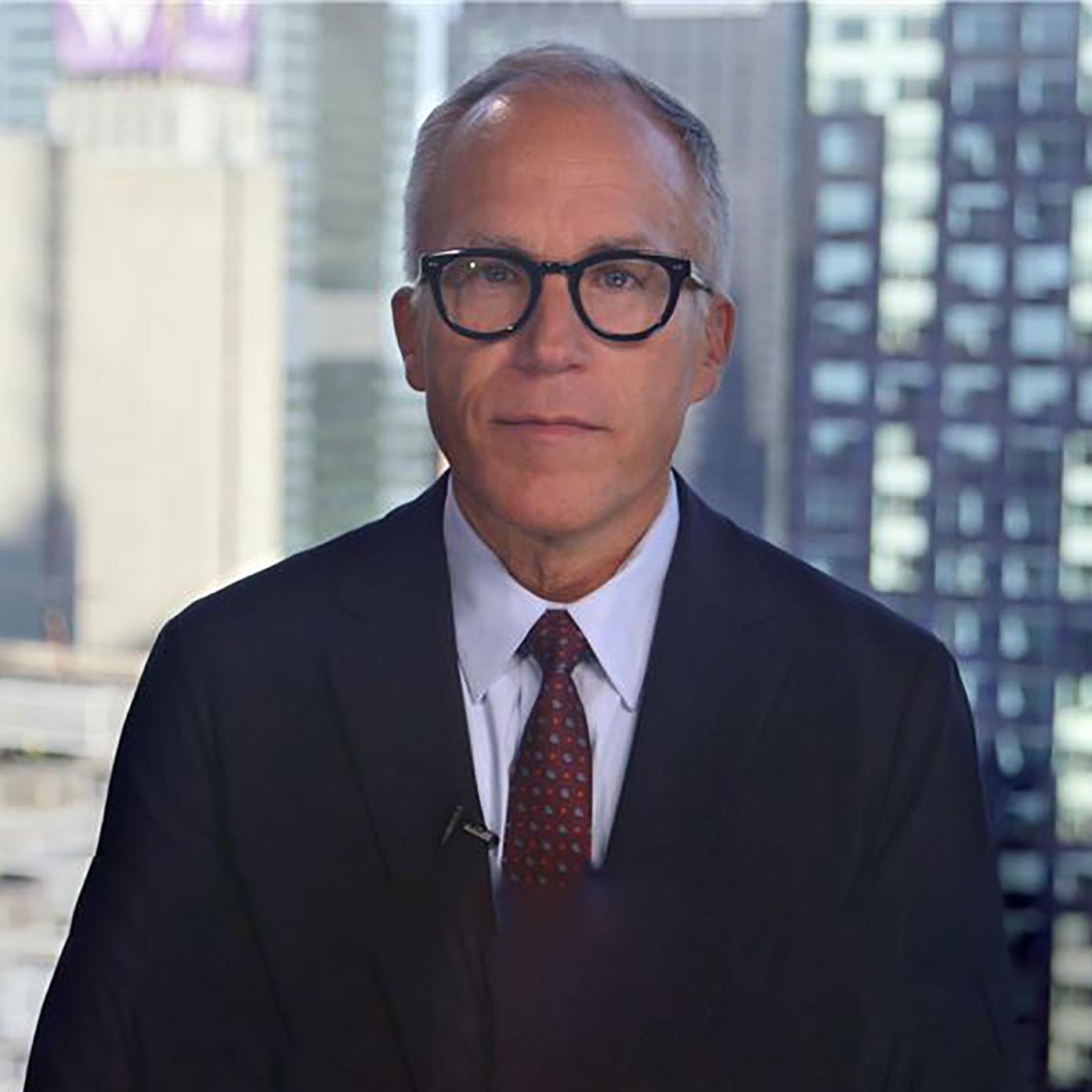
Financing Critical Minerals: Opportunities to Build New Investment Frameworks
-
bookmark
-
print
Critical minerals are essential inputs in modern energy and high-tech applications, including batteries, energy storage and infrastructure, and national security. They also play an important role in the global energy transition, where demand is expected to necessitate significant investment in order to develop new mines, downstream processing capacity, and secure and resilient supply chains.
In this BMO podcast, Kwasi Ampofo, Head of Metals and Mining with BloombergNEF, discussed the critical minerals investment outlook and the complexities of the industry with Greg Jones, Battery Materials Analyst with BMO Capital Markets.
“At a global level, we don't expect the critical minerals industry to overshoot the fundamentals of the economy, which is underpinned by inflation and interest rates.”
I further explore below factors affecting critical minerals investment.
BloombergNEF estimates that supporting clean energy goals through 2050 will require US$1.6 trillion in investment for transition metals such as lithium, nickel, and rare earth elements.1
A pivotal moment in a complex global landscape
Ensuring secure and resilient supply of critical minerals will require commitment and collaboration between governments and industry participants. In addition to creating an attractive investment environment with transparent and streamlined regulatory processes, the role that mining plays in advancing energy transition and national security initiatives must be more widely recognized.
In 2023, China produced 98% of the world’s refined manganese, 95% of the world’s refined graphite, 92% of the rare earths used in permanent magnets and 72% of the world’s refined lithium.2 Chinese firms also have more than 75% of nickel refining capacity in Indonesia, which is poised to become the world's largest nickel producer.3
However, on average, it takes more than 15 years to advance a new mine from discovery to production, with almost 12 of those years preceding the decision to construct.4
BloombergNEF estimates lithium supply will need to increase 465% between 2023 and 2050 to sustain the energy transition, with demand set to exceed supply as soon as this year5 and the story is similar for other critical minerals making now, a pivotal moment for both the industry and investors.
Rising to the challenge
This challenge can be met, but it will require commitment, creativity, and the development of new frameworks for advancing and funding projects while expanding the pool of available capital.
At the recent 2025 BloombergNEF Summit in San Francisco, I joined Greg Jones, Battery Materials Analyst, BMO Capital Markets, and Michael Sedoy, Founding Partner, GoGreen Partners, in a private panel discussion with industry participants and investors to define the challenges faced by developers and producers of critical minerals and explore how the industry can rise to the challenge of meeting expected demand.
BMO Capital Markets – A lead partner
With these complexities in mind, BMO’s Global Metals & Mining team helps mining and critical minerals companies, and investors, navigate an increasingly complex landscape through its full-service platform with expertise in advisory, capital raising, research, and trading capabilities, and has supported companies in the metals and mining sector for more than a century.
The challenges and the opportunities of critical minerals investment are among the topics we will explore at the 34th Annual BMO Global Metals, Mining & Critical Minerals Conference in Florida.
Click here for a BMO podcast featuring Kwasi Ampofo, Head of Metals and Mining, BloombergNEF, on the critical minerals investment outlook.
Sources:
1. BloombergNEF (October 3, 2024), Transitions Metals Outlook 2024.
2. BloombergNEF (October 3, 2024).
3. C4ADS (February 4, 2025), Refining Power
4. Paul Manalo, S&P Global (June 6, 2023), Discovery to production averages 15.7 years for 127 mines
5. BloombergNEF (October 3, 2024).
Kwasi Ampofo:
Are companies and governments willing to provide that extra cost that would compete with China? And at the moment, I think the answer is mixed. Some governments are willing to do a lot more than others in order to level up.
Michael Torrance:
Welcome to sustainability leaders. I'm Michael Torrance, Chief Sustainability Officer at BMO. On this show, we will talk with leading sustainability practitioners from the corporate, investor, academic, and NGO communities to explore how this rapidly evolving field of sustainability is impacting global investment business practices and our world.
Speaker 3:
The views expressed here are those of the participants and not those of Bank of Montreal, its affiliates or subsidiaries.
Gregory Jones:
Hello, I'm Greg Jones, battery materials analyst with BMO Capital Markets. I'm joined today by Kwasi Ampofo, head of metals and mining at Bloomberg NEF for a conversation about the complexities of the critical minerals industry and the investment outlook. Kwasi, thank you for being here today.
Kwasi Ampofo:
Thank you for having me, Greg.
Gregory Jones:
I wanted to start off by setting the stage. The sentiment around battery materials, lithium, graphite and rare earths has been fairly depressed over the past 12 to 18 months. We've seen headlines around slowing EV sales in North America and Europe impacting demand for certain materials, perhaps in underestimation by the market of lithium supply coming out of certain areas like Africa and certain Chinese mines. And then for graphite, a significant build out of capacity in China has overshot demand and many of these factors and others have weighed on pricing for these commodities. In your view, Kwasi, how is the current backdrop impacting the industry's goals and objectives?
Kwasi Ampofo:
Yeah, I think those are great. Interesting question because obviously like you mentioned, if you read the headlines, it's quite easy to have a negative outlook on the industry. But of course if you read BNEF, we give you the data. But what is our research saying? Every year we publish our electric vehicle outlook, which pretty much helps us look into a little bit into the future to determine, for example, how many electric vehicles will be sold the next year, the year after, all the way to 2040.
Now what we've seen is that in our initial estimate, which is earlier last year, the electric vehicle industry, particularly in the US as an example, we were expecting about 48% of passenger vehicles that will be sold in the US to be electric. Now after the election of President Trump, we revised that view down to about 33%. However, still on last year, when you look at countries like Brazil, Brazil's electric vehicle uptake is going to increase by average 49% between now and 2027. So we would see electric vehicle sales rise to about 256,000 units by 2027 in Brazil from pretty much a very low number last year. So I think in conclusion in terms of outlook is very checkered. Yes, some countries would remain gloomy, like I said, the United States. But then if you look at emerging economies like Brazil or even an established electric vehicle market like China, I think there's still quite some growth there and that could potentially have an impact on prices.
Gregory Jones:
So really a dichotomy between different markets is something that investors and market participants need to consider and factor in when you see perhaps negative headlines around North America and Europe, but offsetting or balancing that is like you said, the growth in some of the emerging markets and certainly the month-over-month growth and penetration, strong penetration in China.
Kwasi Ampofo:
Right.
Gregory Jones:
How do you expect the drivers of critical minerals demand to change over the next one to three years? What areas of demand might we see decline and then conversely, where might we see some green shoots?
Kwasi Ampofo:
Yeah, so I think once again, it's such a very diversified market. It really depend on the country and it really depend on the end use. But then I'll start with some of the macro factors that we think are going to impact growth over the next one to three years. So those macro impacts, number one is global growth. If you look at pretty much every consumer product that is being sold today, you can clearly see that over the next two, three years, we expect that market to potentially be in decline as a result of high inflation and high interest rates. That obviously will affect the end use for these critical minerals as well. And we don't expect overall at a global level, we don't expect the critical minerals industry to overshoot the fundamentals of economy, which is underpinned by inflation and interest rates.
Also, I think policy has a key role to play. If you look at some of the initiatives of President Trump, we are waiting to see what ends up happening in Germany or even policies that could potentially come out of China and countries like even South Africa. I think those policies would also have an impact on whether countries are willing to invest in infrastructure because mining infrastructure is also a very big source of demand for these critical minerals like steel, copper, aluminum that we've talked about. Beyond the macro factors, there are also certain micro factors as well. And within those micro factors, it varies by commodity. So you are looking at, for example, if you take a metal like steel, President Trump is thinking of introducing tariffs over the next coming days, weeks, or months, whichever timeline they choose to settle on. And what that means is that it's going to change or reroute global trade.
Either the consumer ends up paying more, which reduces demand, or companies would have to look at building domestic supply chains in the US in order to avoid those tariffs. And that could potentially have a big impact on demand as well. If you look at the carbon border adjustment mechanism in Europe as well, Europe is trying to put a penalty on how much emissions are associated with steel and aluminum production. That could also potentially have an impact on critical minerals because one, if those penalties are high enough, they could deter or have an impact on demand. And once again, if they are not significant enough or if companies want to get around that, they would have to also alter some of the supply chain.
And then the third thing I could also add in terms of what could change demand is price. If prices remain the way they are today, consumption is likely to stay on cost, but then if they do tip into going higher than it is today, that is certainly going to affect consumption and lower demand. So I think these are the three areas, the macro being the interest rates being the inflation and being fiscal policies, the micro being how companies respond to tariffs and CBAM and then more around the pricing where it's likely to actually sustain demand going on or reduce demand.
Gregory Jones:
I think those are all great points and I think we've seen some of those transpire over the past several years as well with the shifting of battery chemistry preferences. You look back a few years ago, NMC was all the talk and we've seen more of a market share being taken by LFP chemistries given the cost profile I think in a lot of cases, environmental aspects as well, and regulation and laborers as well with dynamics around cobalt mining in certain jurisdictions all influencing a lot of the factors that you were just raising. Sticking with demand drivers over the past several years, we've seen growth in plug-in hybrid vehicles, which seem to offer consumers a nice middle ground solution versus fully electric vehicles. We've seen, as I mentioned, LFP technologies gain share versus NMC and a number of companies are advancing recycling technologies to offer solutions for production, scrap or end of life batteries. How might changing or evolving technologies impact the demand picture and consumer preferences?
Kwasi Ampofo:
It's actually interesting. So for me, as an external industry participant, regardless of where the ball rolls, it's still going to be net positive for the metals industry because whatever you do, you need some form of metals one way or the other. However, if you look at it from a perspective of which metals wins and which metal loses, let's take for example, you talk about plug-in hybrid, over the last two, three years, we've seen a resurgence in demand for hybrids and plug-in hybrids, okay? At the moment that resurgence is making one country very, very happy, which is South Africa. It's added one more thing for South Africans to be happy for in addition to the aspirin box. I don't know if you're a fan of rugby, Greg. Well then beyond this rugby, South Africa is happier with plug-in hybrids and if you ask me why, I'll tell you for one simple reason, PDM.
Last year, I think this year the industry is likely to consume about 2 million ounces of platinum for plug-in hybrids and hybrids. Given the trajectory, we are seeing that the adoption of these drive trends by the end of this decade that could double to about 4 million. I did not expect that good four or five years ago because we all thought plug-in hybrids is dead as a result of battery penetration. And then Greg, I can tell you for free, one country is not happy with this. Take a country like Australia that was betting on lithium becoming a dominant metal as a result of battery penetration. But overall, like I said, the net positive for the metals industry is net positive for the metals industry where you have a scenario where PDM producers are probably more excited about the prospect of plug-in hybrids and then lithium producers in Australia are probably less excited about the prospect of plug-in hybrids. So that is for plug-in hybrid.
If we extend that same argument to battery, you rightly mentioned earlier on about the cobalt industry. Look, Greg, six years ago when I joined BNEF, my first project was to estimate the amount of cobalt that the battery industry will need. And I quite remember vividly that my first forecast was by 2030 the industry would need 300,000 metric tons of cobalt. Now fast-forward, I did that same model five years later and my models were telling me that they would need about half of that. As you rightly mentioned, the industry was very bullish on these battery chemistries called the NMC, which are high density. That means on one charge it gives you longer range. But prices of that became so high that if you wanted to penetrate the market beyond where it is today, if you wanted to make electric vehicles an everyday household product and not a premium product, you needed to find cheaper ways to produce it.
And now the current prices of these nickel, manganese, chemistry, cobalt chemistries, it was not sustainable. So we saw Western companies that historically had bet on NMC switch to something called LFP. So lithium ion phosphate battery chemistries, low in energy density, low in range, but then it does the work because prices were so high. Now let me tell you who the biggest losers were. The LFP does not need cobalt, does not need nickel. So instantly over the five years that we saw companies like FWU, Tesla announce LFP on models, what happened was that the demand that we were expecting by 2030 significantly halved. So I can proudly say that the reduction in my model or the reduction in my forecast was not as a result of me getting better at my job, but that the industry switching as a result of price. So that is also one technology switch that could make one country happy, which is those that produce LFP and another country not so happy if you're at the DRC and you can see that in prices today.
Gregory Jones:
That's great perspectives. Thank you. I think listeners will probably be well knowing that China dominates the supply chain for many of these commodities, whether it's lithium, graphite, rare earths, and the refining of processing of those steps. The topic of developing secure and resilient supply chains that reduce dependence on China has been an important theme over the past few years and even more so recently with all the discussion around tariffs and such. We've seen several Western companies struggle to bring new lithium refining capacity online and over 90% of processing of graphite and rare earths takes place in China today. Do you think it's possible for Western companies to catch up to China?
Kwasi Ampofo:
I think first of all, I'll say everything is possible. Never say never. There was a time where Japanese was dominating the chip markets in conductors and America managed to wrestle his dominance back. So never say never. The question Greg is about costs and are taxpayers and businesses and shareholders willing to absorb that cost? So we're trying to put the price tag to some of the, I would use the renewable energy industry as an example. So if you take battery, solar and wind, if for example Europe and the US wanted to onshore the production of all the capacity they will need between now and 2030, you're looking at a price tag of about 30 billion to build these plants alone. And are companies and governments willing to provide that extra cost that would compete with China? And at the moment, I think the answer is mixed. Some governments are willing to do a lot more than others in order to level up.
Gregory Jones:
Following up on the funding side, Western companies have struggled to find the capital necessary to advance their projects. And I think if you look at the stats around public equity market financing, they've declined materially over the past several years challenging for companies to raise capital in the public markets. A pool of capital that the US had been providing through the Department of Energy loans office seems less certain under the new administration and a number of the conditionally committed loans could potentially be at risk for not moving forward. What do you think has to happen to kickstart more investment in new critical mineral supply, even if the expected returns that these companies generate at current spot prices are not that attractive potentially?
Kwasi Ampofo:
When the external industry or when the external investors or general investors look at mining industry, they see risk. That is a single reason why money is not flowing into the industry. It's too risky. So to answer your question, I would highlight certain factors that could help de-risk the industry and ultimately that could help attract some of the capital. The number one thing, it's really about the CapEx, which we talked about earlier. At the moment, if you take a commodity like lithium, what the industry is telling us is in some instances if you wanted to build a third-party refinery for hydroxide in the US, it'll cost you about five times more than it would in China. And that is why incentives like the DOE funding you talk about is very important in order to de-risk the capital raising for most of these projects. So that is number one, direct government incentives in order to de-risk CapEx.
The second thing is also about removing the entry barrier in terms of regulation. At the moment, on average it takes over 10 years and in some instances 20 years, 30 years to get a single permit for a mine. And it's not because the global consensus or the country consensus where you are does not appreciate the importance of mining. It's just at the moment you take the US for instance, you have to go through local laws, you have to go through federal laws, you have to go through state laws, and you have to go through specific... There's no streamline as to what are the specific steps if you wanted to license a mine in the US at the moment. And that is a huge red tape because if I cannot guarantee my shareholders that if I'm going to enter into this licensing process and in two years time I would have results for you, then no one is going to deploy capital to develop those mines.
So I think the second thing is removing those entry barriers and red tape and certain also has to do with technical capability. And this technical capability mostly we put the blame at the doorstep of the mining industry. Technical capability one for government officials, there are certain states that the last time a mining project was approved in the US or in Canada was about what? 20, 30 years ago. The last person to approve a mine is on pension somewhere. So we need to retrain government officials that permits these project. The second thing is also about technical capability of communities. Communities need to understand the role mining plays to everyday life and the energy transition to defense, to homes and all that. So there should be that education as to what is the importance of mining. And finally there should be that technical education of the industry itself. How can we ensure the industry produces its raw material sustainably without doing any harm to the environment? And collectively, if we address these challenges, I think that investors will fall in love with mining again and we'll see capital flow.
Gregory Jones:
I think those are all great points and it overlaps a lot with some recent work that we put together around the permitting of mines and key jurisdictions in comparing and contrasting the regimes. And when you look at the number of stakeholders that are involved in some of these processes, the timelines can get significantly extended when you're trying to ensure that the right environmental standards are upheld and the consultation processes are transparent and so forth.
And I think our conclusions were similar to what you mentioned on average over 15 years to get a mine through from initial discovery into production, a lot of lack of clarity around what the permitting steps are when you look at some of the government or regulator websites, very hard to piece together what that timeline and process looks like. And so I think it really illustrates to me at least the importance of having that expertise and the technical capabilities internally to these mining companies to help navigate those processes with the regulators. We spoke a bit earlier around the return profile of some of these Western projects and the investment required to advance them. Do you think that we'll ever see Western price benchmarks become established and maybe aspects around pricing floors or guarantees to help provide some of that minimum return hurdle that investors or companies themselves might seek in terms of return profile?
Kwasi Ampofo:
Yeah, that was very interesting. There's been a lot of conversations. There were a lot of conversations last year as to how governments can actually support in low price environments and those were ideas that were floated. Look, what is the key determinant for a region or a market being able to get pricing? It comes down to one thing, liquidity. Greg, if you and I are in a room, there's a bar of chocolate here, nobody knows the price. We can only start discovering prices if you express an interest and I make an offer. You come to me. I've got a dollar. How about we make you 1.2? You have cash, you give me the 1.2, you go home with your chocolate. That is how pricing is discovered. It's not based on the will of the government or the interest of the people. There has to be liquidity. Liquidity comes with demand, and pricing comes when demand is met with supply. At the moment you look at some of these commodities, let's take lithium spodumene as an example. How much lithium spodumene is traded in the US?
Gregory Jones:
Probably very minimal or none, yeah.
Kwasi Ampofo:
Very significant from a liquidity standpoint. So I think first things first, yes, governments can intervene, government can set flow prices. But I think the first thing that in order not to set the cart ahead of the horse, it's important to follow the evolution of some of these prices. We saw iron ore shift to Asia because obviously China played a big role in the steel market overtaking Japan somewhere earlier in this century.
So I think it's important first things first for there to be that interest in actually a price assessment for some of these commodities, whether in Europe or in the US or South America. There has to be demand and there has to be supply that is flowing that demand and that ultimately creates that which then would enable price agencies to follow with a benchmark. However, we are not in normal times. If we are going to wait for the natural evolution to occur, it might take a while and companies don't have that luxury. And like you rightly mentioned, certain governments have floated the idea of providing a backstop or a floor price. It's something that we are BNEF are keeping our eyes on and keeping our ears on as well as to how that would evolve because quite difficult to imagine the practicality of that because the danger there is that if government intervenes too much then you lose that advantage every market offers in terms of price discoverability.
Gregory Jones:
Just to tie our conversation together, I'd like to conclude with another macro, big picture, discussion topic. What do you think could surprise to the upside or the downside in the next 12 to 24 months?
Kwasi Ampofo:
Well, at the macro level, I think policy will play a key role. If Trump escalates its tariffs on certain metals that is likely to attract retaliation from other markets like China or Europe and it becomes a race to a tariff market. The second thing for me, it's also interest rates and commodities like copper are very exposed to that global economy. So if interest rates ultimately comes down over the next 24 months, that will certainly have an impact on consumption as well is likely to increase consumption of certain household items which will drive demand for copper. Another one that we are also keeping an eye on is the lithium market. I think for now the industry was struggling with overcapacity. We still don't know what Chinese majors in the lithium industry endgame is because they're still doing M&A, they're still doing acquisitions. And if we have another major acquisition of a undeveloped project anywhere else in the world over the next 24 months, I would say that that could potentially extend a low price environment we see now.
Now let's come to nickel. Very interesting one, Indonesia at the moment, Indonesia is also struggling with overcapacity and that has led to prices falling. There was initial indication that the government is likely to or could potentially review the production quotas or export quotas, which I won't contrast for some of these producers in the region.
If I wake up tomorrow or any other day over the next 24 months and that happens, Greg, that would have an impact on prices. So I'm keeping an eye on that as well. And then the final one I'll talk about is the real estate building industry in China. It's still quite unclear what is going on in terms of how the recovery is going to look like. Are we going to have a sharp recovery, which would mean that steel consumption will recover this year or next year? Will government stimulus move the needle in order to still drive the real estate industry? There still require some question marks there. Once again, if I woke up in a month's time, two months time, three months time, and the government has announced a mega stimulus in Beijing, that certainly would align more with our best-case scenario and that certainly will move the market. So overall, I think it's not a straight answer depending on the commodity, depending on the region, depending on what Twitter is saying, all of these could have an impact on the market.
Gregory Jones:
That's great, Kwasi. Thank you very much for sharing your perspectives and always great to catch up. And thank you for joining us today.
Kwasi Ampofo:
Greg. Thank you so much for having me. And thank you to your listeners for tuning in as well.
Michael Torrance:
Thanks for listening to Sustainability Leaders. This podcast is presented by BMO. You can find our show on Apple Podcasts, Spotify, or your favorite podcast player. Press the follow button if you want to get notified when new episodes are published. We value your input, so please leave a rating review and any feedback that you might have or visit us at bmo.com/sustainability leaders. Our show and resources are produced with support from BMO's marketing team and Puddle Creative. Until next time, thanks for listening and have a great week.
Gregory Jones:
For BMO disclosures, please visit bmocm.com/podcast/disclaimer.

Financing Critical Minerals: Opportunities to Build New Investment Frameworks
-
Minute Read
-
Listen
Stop
-
Text Bigger | Text Smaller
Critical minerals are essential inputs in modern energy and high-tech applications, including batteries, energy storage and infrastructure, and national security. They also play an important role in the global energy transition, where demand is expected to necessitate significant investment in order to develop new mines, downstream processing capacity, and secure and resilient supply chains.
In this BMO podcast, Kwasi Ampofo, Head of Metals and Mining with BloombergNEF, discussed the critical minerals investment outlook and the complexities of the industry with Greg Jones, Battery Materials Analyst with BMO Capital Markets.
“At a global level, we don't expect the critical minerals industry to overshoot the fundamentals of the economy, which is underpinned by inflation and interest rates.”
I further explore below factors affecting critical minerals investment.
BloombergNEF estimates that supporting clean energy goals through 2050 will require US$1.6 trillion in investment for transition metals such as lithium, nickel, and rare earth elements.1
A pivotal moment in a complex global landscape
Ensuring secure and resilient supply of critical minerals will require commitment and collaboration between governments and industry participants. In addition to creating an attractive investment environment with transparent and streamlined regulatory processes, the role that mining plays in advancing energy transition and national security initiatives must be more widely recognized.
In 2023, China produced 98% of the world’s refined manganese, 95% of the world’s refined graphite, 92% of the rare earths used in permanent magnets and 72% of the world’s refined lithium.2 Chinese firms also have more than 75% of nickel refining capacity in Indonesia, which is poised to become the world's largest nickel producer.3
However, on average, it takes more than 15 years to advance a new mine from discovery to production, with almost 12 of those years preceding the decision to construct.4
BloombergNEF estimates lithium supply will need to increase 465% between 2023 and 2050 to sustain the energy transition, with demand set to exceed supply as soon as this year5 and the story is similar for other critical minerals making now, a pivotal moment for both the industry and investors.
Rising to the challenge
This challenge can be met, but it will require commitment, creativity, and the development of new frameworks for advancing and funding projects while expanding the pool of available capital.
At the recent 2025 BloombergNEF Summit in San Francisco, I joined Greg Jones, Battery Materials Analyst, BMO Capital Markets, and Michael Sedoy, Founding Partner, GoGreen Partners, in a private panel discussion with industry participants and investors to define the challenges faced by developers and producers of critical minerals and explore how the industry can rise to the challenge of meeting expected demand.
BMO Capital Markets – A lead partner
With these complexities in mind, BMO’s Global Metals & Mining team helps mining and critical minerals companies, and investors, navigate an increasingly complex landscape through its full-service platform with expertise in advisory, capital raising, research, and trading capabilities, and has supported companies in the metals and mining sector for more than a century.
The challenges and the opportunities of critical minerals investment are among the topics we will explore at the 34th Annual BMO Global Metals, Mining & Critical Minerals Conference in Florida.
Click here for a BMO podcast featuring Kwasi Ampofo, Head of Metals and Mining, BloombergNEF, on the critical minerals investment outlook.
Sources:
1. BloombergNEF (October 3, 2024), Transitions Metals Outlook 2024.
2. BloombergNEF (October 3, 2024).
3. C4ADS (February 4, 2025), Refining Power
4. Paul Manalo, S&P Global (June 6, 2023), Discovery to production averages 15.7 years for 127 mines
5. BloombergNEF (October 3, 2024).
Kwasi Ampofo:
Are companies and governments willing to provide that extra cost that would compete with China? And at the moment, I think the answer is mixed. Some governments are willing to do a lot more than others in order to level up.
Michael Torrance:
Welcome to sustainability leaders. I'm Michael Torrance, Chief Sustainability Officer at BMO. On this show, we will talk with leading sustainability practitioners from the corporate, investor, academic, and NGO communities to explore how this rapidly evolving field of sustainability is impacting global investment business practices and our world.
Speaker 3:
The views expressed here are those of the participants and not those of Bank of Montreal, its affiliates or subsidiaries.
Gregory Jones:
Hello, I'm Greg Jones, battery materials analyst with BMO Capital Markets. I'm joined today by Kwasi Ampofo, head of metals and mining at Bloomberg NEF for a conversation about the complexities of the critical minerals industry and the investment outlook. Kwasi, thank you for being here today.
Kwasi Ampofo:
Thank you for having me, Greg.
Gregory Jones:
I wanted to start off by setting the stage. The sentiment around battery materials, lithium, graphite and rare earths has been fairly depressed over the past 12 to 18 months. We've seen headlines around slowing EV sales in North America and Europe impacting demand for certain materials, perhaps in underestimation by the market of lithium supply coming out of certain areas like Africa and certain Chinese mines. And then for graphite, a significant build out of capacity in China has overshot demand and many of these factors and others have weighed on pricing for these commodities. In your view, Kwasi, how is the current backdrop impacting the industry's goals and objectives?
Kwasi Ampofo:
Yeah, I think those are great. Interesting question because obviously like you mentioned, if you read the headlines, it's quite easy to have a negative outlook on the industry. But of course if you read BNEF, we give you the data. But what is our research saying? Every year we publish our electric vehicle outlook, which pretty much helps us look into a little bit into the future to determine, for example, how many electric vehicles will be sold the next year, the year after, all the way to 2040.
Now what we've seen is that in our initial estimate, which is earlier last year, the electric vehicle industry, particularly in the US as an example, we were expecting about 48% of passenger vehicles that will be sold in the US to be electric. Now after the election of President Trump, we revised that view down to about 33%. However, still on last year, when you look at countries like Brazil, Brazil's electric vehicle uptake is going to increase by average 49% between now and 2027. So we would see electric vehicle sales rise to about 256,000 units by 2027 in Brazil from pretty much a very low number last year. So I think in conclusion in terms of outlook is very checkered. Yes, some countries would remain gloomy, like I said, the United States. But then if you look at emerging economies like Brazil or even an established electric vehicle market like China, I think there's still quite some growth there and that could potentially have an impact on prices.
Gregory Jones:
So really a dichotomy between different markets is something that investors and market participants need to consider and factor in when you see perhaps negative headlines around North America and Europe, but offsetting or balancing that is like you said, the growth in some of the emerging markets and certainly the month-over-month growth and penetration, strong penetration in China.
Kwasi Ampofo:
Right.
Gregory Jones:
How do you expect the drivers of critical minerals demand to change over the next one to three years? What areas of demand might we see decline and then conversely, where might we see some green shoots?
Kwasi Ampofo:
Yeah, so I think once again, it's such a very diversified market. It really depend on the country and it really depend on the end use. But then I'll start with some of the macro factors that we think are going to impact growth over the next one to three years. So those macro impacts, number one is global growth. If you look at pretty much every consumer product that is being sold today, you can clearly see that over the next two, three years, we expect that market to potentially be in decline as a result of high inflation and high interest rates. That obviously will affect the end use for these critical minerals as well. And we don't expect overall at a global level, we don't expect the critical minerals industry to overshoot the fundamentals of economy, which is underpinned by inflation and interest rates.
Also, I think policy has a key role to play. If you look at some of the initiatives of President Trump, we are waiting to see what ends up happening in Germany or even policies that could potentially come out of China and countries like even South Africa. I think those policies would also have an impact on whether countries are willing to invest in infrastructure because mining infrastructure is also a very big source of demand for these critical minerals like steel, copper, aluminum that we've talked about. Beyond the macro factors, there are also certain micro factors as well. And within those micro factors, it varies by commodity. So you are looking at, for example, if you take a metal like steel, President Trump is thinking of introducing tariffs over the next coming days, weeks, or months, whichever timeline they choose to settle on. And what that means is that it's going to change or reroute global trade.
Either the consumer ends up paying more, which reduces demand, or companies would have to look at building domestic supply chains in the US in order to avoid those tariffs. And that could potentially have a big impact on demand as well. If you look at the carbon border adjustment mechanism in Europe as well, Europe is trying to put a penalty on how much emissions are associated with steel and aluminum production. That could also potentially have an impact on critical minerals because one, if those penalties are high enough, they could deter or have an impact on demand. And once again, if they are not significant enough or if companies want to get around that, they would have to also alter some of the supply chain.
And then the third thing I could also add in terms of what could change demand is price. If prices remain the way they are today, consumption is likely to stay on cost, but then if they do tip into going higher than it is today, that is certainly going to affect consumption and lower demand. So I think these are the three areas, the macro being the interest rates being the inflation and being fiscal policies, the micro being how companies respond to tariffs and CBAM and then more around the pricing where it's likely to actually sustain demand going on or reduce demand.
Gregory Jones:
I think those are all great points and I think we've seen some of those transpire over the past several years as well with the shifting of battery chemistry preferences. You look back a few years ago, NMC was all the talk and we've seen more of a market share being taken by LFP chemistries given the cost profile I think in a lot of cases, environmental aspects as well, and regulation and laborers as well with dynamics around cobalt mining in certain jurisdictions all influencing a lot of the factors that you were just raising. Sticking with demand drivers over the past several years, we've seen growth in plug-in hybrid vehicles, which seem to offer consumers a nice middle ground solution versus fully electric vehicles. We've seen, as I mentioned, LFP technologies gain share versus NMC and a number of companies are advancing recycling technologies to offer solutions for production, scrap or end of life batteries. How might changing or evolving technologies impact the demand picture and consumer preferences?
Kwasi Ampofo:
It's actually interesting. So for me, as an external industry participant, regardless of where the ball rolls, it's still going to be net positive for the metals industry because whatever you do, you need some form of metals one way or the other. However, if you look at it from a perspective of which metals wins and which metal loses, let's take for example, you talk about plug-in hybrid, over the last two, three years, we've seen a resurgence in demand for hybrids and plug-in hybrids, okay? At the moment that resurgence is making one country very, very happy, which is South Africa. It's added one more thing for South Africans to be happy for in addition to the aspirin box. I don't know if you're a fan of rugby, Greg. Well then beyond this rugby, South Africa is happier with plug-in hybrids and if you ask me why, I'll tell you for one simple reason, PDM.
Last year, I think this year the industry is likely to consume about 2 million ounces of platinum for plug-in hybrids and hybrids. Given the trajectory, we are seeing that the adoption of these drive trends by the end of this decade that could double to about 4 million. I did not expect that good four or five years ago because we all thought plug-in hybrids is dead as a result of battery penetration. And then Greg, I can tell you for free, one country is not happy with this. Take a country like Australia that was betting on lithium becoming a dominant metal as a result of battery penetration. But overall, like I said, the net positive for the metals industry is net positive for the metals industry where you have a scenario where PDM producers are probably more excited about the prospect of plug-in hybrids and then lithium producers in Australia are probably less excited about the prospect of plug-in hybrids. So that is for plug-in hybrid.
If we extend that same argument to battery, you rightly mentioned earlier on about the cobalt industry. Look, Greg, six years ago when I joined BNEF, my first project was to estimate the amount of cobalt that the battery industry will need. And I quite remember vividly that my first forecast was by 2030 the industry would need 300,000 metric tons of cobalt. Now fast-forward, I did that same model five years later and my models were telling me that they would need about half of that. As you rightly mentioned, the industry was very bullish on these battery chemistries called the NMC, which are high density. That means on one charge it gives you longer range. But prices of that became so high that if you wanted to penetrate the market beyond where it is today, if you wanted to make electric vehicles an everyday household product and not a premium product, you needed to find cheaper ways to produce it.
And now the current prices of these nickel, manganese, chemistry, cobalt chemistries, it was not sustainable. So we saw Western companies that historically had bet on NMC switch to something called LFP. So lithium ion phosphate battery chemistries, low in energy density, low in range, but then it does the work because prices were so high. Now let me tell you who the biggest losers were. The LFP does not need cobalt, does not need nickel. So instantly over the five years that we saw companies like FWU, Tesla announce LFP on models, what happened was that the demand that we were expecting by 2030 significantly halved. So I can proudly say that the reduction in my model or the reduction in my forecast was not as a result of me getting better at my job, but that the industry switching as a result of price. So that is also one technology switch that could make one country happy, which is those that produce LFP and another country not so happy if you're at the DRC and you can see that in prices today.
Gregory Jones:
That's great perspectives. Thank you. I think listeners will probably be well knowing that China dominates the supply chain for many of these commodities, whether it's lithium, graphite, rare earths, and the refining of processing of those steps. The topic of developing secure and resilient supply chains that reduce dependence on China has been an important theme over the past few years and even more so recently with all the discussion around tariffs and such. We've seen several Western companies struggle to bring new lithium refining capacity online and over 90% of processing of graphite and rare earths takes place in China today. Do you think it's possible for Western companies to catch up to China?
Kwasi Ampofo:
I think first of all, I'll say everything is possible. Never say never. There was a time where Japanese was dominating the chip markets in conductors and America managed to wrestle his dominance back. So never say never. The question Greg is about costs and are taxpayers and businesses and shareholders willing to absorb that cost? So we're trying to put the price tag to some of the, I would use the renewable energy industry as an example. So if you take battery, solar and wind, if for example Europe and the US wanted to onshore the production of all the capacity they will need between now and 2030, you're looking at a price tag of about 30 billion to build these plants alone. And are companies and governments willing to provide that extra cost that would compete with China? And at the moment, I think the answer is mixed. Some governments are willing to do a lot more than others in order to level up.
Gregory Jones:
Following up on the funding side, Western companies have struggled to find the capital necessary to advance their projects. And I think if you look at the stats around public equity market financing, they've declined materially over the past several years challenging for companies to raise capital in the public markets. A pool of capital that the US had been providing through the Department of Energy loans office seems less certain under the new administration and a number of the conditionally committed loans could potentially be at risk for not moving forward. What do you think has to happen to kickstart more investment in new critical mineral supply, even if the expected returns that these companies generate at current spot prices are not that attractive potentially?
Kwasi Ampofo:
When the external industry or when the external investors or general investors look at mining industry, they see risk. That is a single reason why money is not flowing into the industry. It's too risky. So to answer your question, I would highlight certain factors that could help de-risk the industry and ultimately that could help attract some of the capital. The number one thing, it's really about the CapEx, which we talked about earlier. At the moment, if you take a commodity like lithium, what the industry is telling us is in some instances if you wanted to build a third-party refinery for hydroxide in the US, it'll cost you about five times more than it would in China. And that is why incentives like the DOE funding you talk about is very important in order to de-risk the capital raising for most of these projects. So that is number one, direct government incentives in order to de-risk CapEx.
The second thing is also about removing the entry barrier in terms of regulation. At the moment, on average it takes over 10 years and in some instances 20 years, 30 years to get a single permit for a mine. And it's not because the global consensus or the country consensus where you are does not appreciate the importance of mining. It's just at the moment you take the US for instance, you have to go through local laws, you have to go through federal laws, you have to go through state laws, and you have to go through specific... There's no streamline as to what are the specific steps if you wanted to license a mine in the US at the moment. And that is a huge red tape because if I cannot guarantee my shareholders that if I'm going to enter into this licensing process and in two years time I would have results for you, then no one is going to deploy capital to develop those mines.
So I think the second thing is removing those entry barriers and red tape and certain also has to do with technical capability. And this technical capability mostly we put the blame at the doorstep of the mining industry. Technical capability one for government officials, there are certain states that the last time a mining project was approved in the US or in Canada was about what? 20, 30 years ago. The last person to approve a mine is on pension somewhere. So we need to retrain government officials that permits these project. The second thing is also about technical capability of communities. Communities need to understand the role mining plays to everyday life and the energy transition to defense, to homes and all that. So there should be that education as to what is the importance of mining. And finally there should be that technical education of the industry itself. How can we ensure the industry produces its raw material sustainably without doing any harm to the environment? And collectively, if we address these challenges, I think that investors will fall in love with mining again and we'll see capital flow.
Gregory Jones:
I think those are all great points and it overlaps a lot with some recent work that we put together around the permitting of mines and key jurisdictions in comparing and contrasting the regimes. And when you look at the number of stakeholders that are involved in some of these processes, the timelines can get significantly extended when you're trying to ensure that the right environmental standards are upheld and the consultation processes are transparent and so forth.
And I think our conclusions were similar to what you mentioned on average over 15 years to get a mine through from initial discovery into production, a lot of lack of clarity around what the permitting steps are when you look at some of the government or regulator websites, very hard to piece together what that timeline and process looks like. And so I think it really illustrates to me at least the importance of having that expertise and the technical capabilities internally to these mining companies to help navigate those processes with the regulators. We spoke a bit earlier around the return profile of some of these Western projects and the investment required to advance them. Do you think that we'll ever see Western price benchmarks become established and maybe aspects around pricing floors or guarantees to help provide some of that minimum return hurdle that investors or companies themselves might seek in terms of return profile?
Kwasi Ampofo:
Yeah, that was very interesting. There's been a lot of conversations. There were a lot of conversations last year as to how governments can actually support in low price environments and those were ideas that were floated. Look, what is the key determinant for a region or a market being able to get pricing? It comes down to one thing, liquidity. Greg, if you and I are in a room, there's a bar of chocolate here, nobody knows the price. We can only start discovering prices if you express an interest and I make an offer. You come to me. I've got a dollar. How about we make you 1.2? You have cash, you give me the 1.2, you go home with your chocolate. That is how pricing is discovered. It's not based on the will of the government or the interest of the people. There has to be liquidity. Liquidity comes with demand, and pricing comes when demand is met with supply. At the moment you look at some of these commodities, let's take lithium spodumene as an example. How much lithium spodumene is traded in the US?
Gregory Jones:
Probably very minimal or none, yeah.
Kwasi Ampofo:
Very significant from a liquidity standpoint. So I think first things first, yes, governments can intervene, government can set flow prices. But I think the first thing that in order not to set the cart ahead of the horse, it's important to follow the evolution of some of these prices. We saw iron ore shift to Asia because obviously China played a big role in the steel market overtaking Japan somewhere earlier in this century.
So I think it's important first things first for there to be that interest in actually a price assessment for some of these commodities, whether in Europe or in the US or South America. There has to be demand and there has to be supply that is flowing that demand and that ultimately creates that which then would enable price agencies to follow with a benchmark. However, we are not in normal times. If we are going to wait for the natural evolution to occur, it might take a while and companies don't have that luxury. And like you rightly mentioned, certain governments have floated the idea of providing a backstop or a floor price. It's something that we are BNEF are keeping our eyes on and keeping our ears on as well as to how that would evolve because quite difficult to imagine the practicality of that because the danger there is that if government intervenes too much then you lose that advantage every market offers in terms of price discoverability.
Gregory Jones:
Just to tie our conversation together, I'd like to conclude with another macro, big picture, discussion topic. What do you think could surprise to the upside or the downside in the next 12 to 24 months?
Kwasi Ampofo:
Well, at the macro level, I think policy will play a key role. If Trump escalates its tariffs on certain metals that is likely to attract retaliation from other markets like China or Europe and it becomes a race to a tariff market. The second thing for me, it's also interest rates and commodities like copper are very exposed to that global economy. So if interest rates ultimately comes down over the next 24 months, that will certainly have an impact on consumption as well is likely to increase consumption of certain household items which will drive demand for copper. Another one that we are also keeping an eye on is the lithium market. I think for now the industry was struggling with overcapacity. We still don't know what Chinese majors in the lithium industry endgame is because they're still doing M&A, they're still doing acquisitions. And if we have another major acquisition of a undeveloped project anywhere else in the world over the next 24 months, I would say that that could potentially extend a low price environment we see now.
Now let's come to nickel. Very interesting one, Indonesia at the moment, Indonesia is also struggling with overcapacity and that has led to prices falling. There was initial indication that the government is likely to or could potentially review the production quotas or export quotas, which I won't contrast for some of these producers in the region.
If I wake up tomorrow or any other day over the next 24 months and that happens, Greg, that would have an impact on prices. So I'm keeping an eye on that as well. And then the final one I'll talk about is the real estate building industry in China. It's still quite unclear what is going on in terms of how the recovery is going to look like. Are we going to have a sharp recovery, which would mean that steel consumption will recover this year or next year? Will government stimulus move the needle in order to still drive the real estate industry? There still require some question marks there. Once again, if I woke up in a month's time, two months time, three months time, and the government has announced a mega stimulus in Beijing, that certainly would align more with our best-case scenario and that certainly will move the market. So overall, I think it's not a straight answer depending on the commodity, depending on the region, depending on what Twitter is saying, all of these could have an impact on the market.
Gregory Jones:
That's great, Kwasi. Thank you very much for sharing your perspectives and always great to catch up. And thank you for joining us today.
Kwasi Ampofo:
Greg. Thank you so much for having me. And thank you to your listeners for tuning in as well.
Michael Torrance:
Thanks for listening to Sustainability Leaders. This podcast is presented by BMO. You can find our show on Apple Podcasts, Spotify, or your favorite podcast player. Press the follow button if you want to get notified when new episodes are published. We value your input, so please leave a rating review and any feedback that you might have or visit us at bmo.com/sustainability leaders. Our show and resources are produced with support from BMO's marketing team and Puddle Creative. Until next time, thanks for listening and have a great week.
Gregory Jones:
For BMO disclosures, please visit bmocm.com/podcast/disclaimer.
You might also be interested in
More U.S. and Canadian Companies Are Being Driven to Climate Action Because of Customer Expectations: Survey Shows

Validating Breakthrough Energy Concepts, a Discussion with George Hathaway

How Developers and Builders Are Paving the Way for a Greener Future

From Farm to Future: How Funding Solutions are Shaping Agricultural Emissions
Why Sustainability Is Good Business: Key Takeaways from IEFA Toronto 2024

Building for Tomorrow: Real Estate, Construction, and Sustainability
Women Entrepreneurs are Advancing Sustainability: Reflecting on the Results of the WE Empower UN SDG Challenge

Canadian Zero-Carbon Multi-Unit Residential Buildings: An Analysis of the Cost and Asset Value

BMO Equity Research on the AI + Data Center Build Out: Sustainability Impacts, Second Order Beneficiaries

Making Renewable Energy Technology Accessible to Underserved Communities: GRID Alternatives in Conversation

Women are Leading Across the Landscape of Climate and Sustainability

The Role of Responsible Mining in the Clean Energy Transition: ICMM CEO Rohitesh Dhawan in Conversation

Extreme Temperatures: How North American Cities Amplify Climate Change

Transforming the Textile Industry: Apparel Impact Institute in Conversation

Protecting Outdoor Spaces: The Conservation Alliance in Conversation

Building Meaningful Connections with Nature: Parks California in Conversation

Free, Prior and Informed Consent (FPIC): Mark Podlasly in Conversation

Quick Listen: Michael Torrance on Empowering Your Organization to Operationalize Sustainability

Quick Listen: Darryl White on the Importance of US-Canada Partnership

North America’s Critical Minerals Advantage: Deep Dive on Community Engagement

Evolving Mining for a Sustainable Energy Transition: ICMM CEO Rohitesh Dhawan in Conversation

Public Policy and the Energy Transition: Howard Learner in Conversation

Quick Listen: Darryl White on the Economic Implications of a Rapidly-Aging Society

Taskforce on Nature-Related Financial Disclosure (TNFD) – A Plan for Integrating Nature into Business

ESG Trends in the Base Metal and Diversified Mining Industries: BMO Equity Research Report

COP27 in Focus: Will Energy Security and Economic Uncertainty Impact the Climate Transition?

RoadMap Project: An Indigenous-led Paradigm Shift for Economic Reconciliation

On-Farm Carbon and Emissions Management: Opportunities and Challenges

Sustainability Strategy and Reporting for Small and Medium Sized Companies: A Discussion at the Conference of Montreal

Investment Opportunities for a Net-Zero Economy: A Conversation at the Milken Institute Global Conference

How Hope, Grit, and a Hospital Network Saved Maverix Private Capital Founder John Ruffolo

Hydrogen’s Role in the Energy Transition: Matt Fairley in Conversation

Key Takeaways on Ag, Food, Fertilizer & ESG from BMO’s Farm to Market Conference

Building an ESG Business Case in the Food Sector: The Food Institute

Retrofitting Canada's Building Sector: Efficiency Canada’s Corey Diamond in Conversation

The Role of Hydrogen in the Energy Transition: FuelCell Energy CEO Jason Few in Conversation


Tackling Climate Change in Metals and Mining: ICMM CEO Rohitesh Dhawan in Conversation

The Post 2020 Biodiversity Framework – A Discussion with Basile Van Havre

The Risk of Permafrost Thaw on People, Infrastructure & Our Future Climate

Biggest Trends in Food and Ag, From ESG to Inflation to the Supply Chain

Understanding Biodiversity Management: Best Practices and Innovation

Episode 31: Valuing Natural Capital – A Discussion with Pavan Sukhdev

Episode 29: What 20 Years of ESG Engagement Can Teach Us About the Future

Episode 28: Bloomberg: Enhancing ESG Disclosure through Data-Driven Solutions

Episode 23: TC Transcontinental – A Market Leader in Sustainable Packaging

Episode 07: World Bank: Mobilizing Capital Markets for Sustainable Finance

Episode 06: Responsible Investing – Industry Trends and Best Practices from Canada











